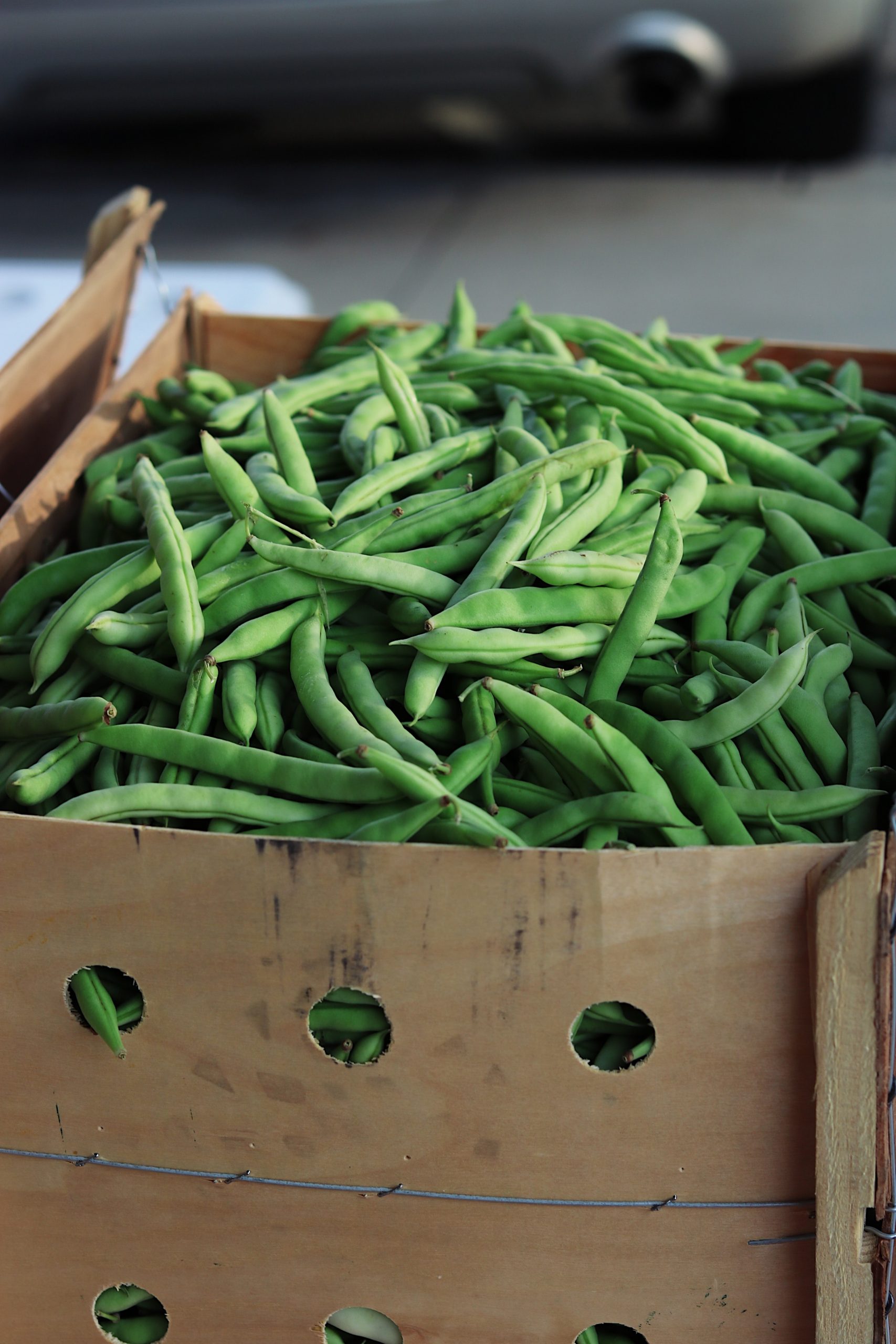Last Updated on April 27, 2022 by Real Men Sow
Dwarf French Beans are compact and do not require staking like other beans. They leave the soil once they’ve been cropped in great condition due to the nitrogen build-up in their roots. The crops are picked while they’re young and green, you don’t have to remove the beans from the pods since the whole pod is the one cooked and eaten.
 Soil Preference in Sowing
Soil Preference in Sowing
They prefer light soil but can tolerate heavy clay soil if there’s enough fine organic matter forked in. Dig old compost or well-rotted manure in Autumn or Winter. You’ll have to leave the ground rough in the Winter and let cold winds and frosts get to it. By spring you’ll have to do light forking along with adding organic fertilizer.
How to Grow Dwarf French Beans from Seed?
Start sowing in late March or early April to get harvest in June. Remember that your seeds should not be sown in wet and cold soil. Sow in a cold frame which is 5cm apart and 5cm deep. You’ll have to raise the frame light to allow air circulation and leave it off on warm days to gradually introduce your seedling to the cold climate.
Transplant the seedlings in late of May. Remember to have 22.5cm between your plants and 45.5cm rows apart.
Can You Sow Dwarf French Beans Indoors?
Dwarf french beans grow well indoors. Start sowing the beans near the end of May in 7cm and 6 cell modules. Plant one seed per module, putting them 4cm deep in the fine seed compost. Water it and leave it in your greenhouse or polytunnel to let it germinate for about 7 – 14 days. A heat bench or propagator is essential in the cold season.
Hardening Off Dwarf French Beans
If you’ve raised your plants indoors, hardening off for a week or 10 days is necessary to get them used to the temperature outside. Since French Beans hate the cold, they may suffer a shock once you transplant them outside.
It’s best to use a cloche or a mini greenhouse. Leave the cloche off the plants on dry frost free days and put it back on at night. Gradually lengthen the time with the cloche off before leaving it off completely.
If the weather isn’t that cold, you could just move the plants outside and take them back in at night. Gradually lengthen the time of leaving the plants outside before leaving them outside completely.
If you’ve grown them on a windowsill, leave them in an unheated room for 1 – 2 days before moving it outside.
Direct Sowing Dwarf French Beans
Towards the end of May, you may sow your seeds directly outside. Sow them 4cm deep, 15cm between plants, and 40cm between rows. However, keep on the lookout for slugs or use an organic slug pellet or a beer trap for control.
Planting Out Dwarf French Beans
After Hardening off, you can plant them out in the garden. Grow them in a warm and sheltered location in your garden. It’s not good for French Beans to be grown in exposed sites because they hate it.
You should plant them in 40cm apart rows, with your plants 15cm apart.
Care for French Beans
Keep the areas where your seedlings are, weed free and aerated by hoeing around regularly, using an oscillating hoe.
Thinning
French Bean plants are about 10cm high, so you’ll have to thin them to 22.5cm apart. You can help your French Bean Plants a little by pushing sticks to keep the plants upright when pods start to form.
Supporting them isn’t usually necessary, however, doing so would keep them clean and will lessen the threat of slugs.
Pests
Slugs – use organic slug baits or beer trap
Black Bean Aphid – also known as blackfly, usually a problem in July and August. You may grow marigolds near the beans to attract ladybirds that will eat them.
Harvesting Beans
Pick the pods to encourage more pods to grow. Pick the young and tender pods by holding the stem and pulling the pod downwards. By doing this, you’ll avoid damage and uprooting of the plant. You should pick pods at least once or twice a week to harvest the tenderest beans.
Storing Dwarf French Beans
Dried Beans for the winter would mean you’ll have to leave a few plants to ripen at the end of summer. Hang the beans upside down in the sun to dry, make sure to cover it if the weather is bad. Once they’re crisp and dry, shell them and store in airtight containers.


